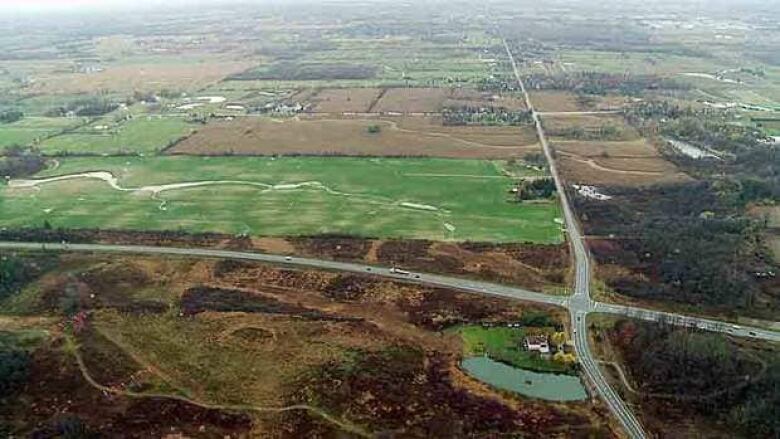OMB rules in favour of Aerotropolis plan

The largest urban boundary expansion in Hamilton's history is going ahead, as the Ontario Municipal Board (OMB) has ruled in the city's favour on a massive expansion around the airport.
Withthe new ruling, the city will move ahead with the Airport Employment Growth District (AEGD), otherwise known as Aerotropolis. The plan calls for a net of 555 hectares of industrial and commercial growth around the John C. Munro Hamilton International Airport by 2031.
In its ruling, the board dismissed appeals from both Environment Hamilton and Hamiltonians for Progressive Development and accepted the city's argument that 555 hectares of employment lands are needed.
The expansion is necessary for employment opportunities, said OMB vice-chair J. V. Zuidema in the decision.
"The board orders that the appeals of EH and HPD on Phase 2 are dismissed and that 555 net ha is required to meet the forecasted demand for employment land to the year 2031," she wrote.
The ruling was dated July 3. It was the latest step in a 10-year process to open up about 720 hectares around the airport to long-term development.
Opponents to the plan say the expansion is unnecessary, and could have a negative impact on the environment and use up good farmland.
The city says it will attract as many as 80,000jobs, lure industry and bring in as much as $70 million per year in taxes by 2031.
The decision is "a frustrating one," said Don McLean, who participated in the hearing as a director for Environment Hamilton.
It didn't fully address, among other elements, his group's concern that there was plenty of brownfield land available in other parts of Hamilton, he said. His group maintains that there is enough potential industrial land already, and that over time, the city could use it for residential development.
Fighting urban sprawl
"This is fundamentally about urban sprawl,"McLean said.
"The expectation we have had from the beginning is that very little will be used for employment, simply because the demand isn't there."
The decision "means more costs on city taxpayers, and it means all the additional costs that sprawl entails," he said.
"This is the wrong position for the city to take. At the end of the day, it's bad planning."
The city is "ecstatic" about the decision, said Tim McCabe, the city's general manager of planning and economic development.
It means the board agrees with the city's need for shovel-ready land for future employers, he said.
Brownfields won't cut it, McCabe says
Much of Hamilton's inner-city brownfield lands are fragmented and still owned by other people, he said. And those lands are not close enough to major highways for the industry the city is targeting.
"They're not going to go on contaminated brownfield land," he said. "They need clean greenfield land."
The board will hold hearings later this year dealing with an overall implementation plan. That will determine the size of land involved in the first phase of development, McCabe said.
The AEGD issue has been "a long process," said Coun. Lloyd Ferguson of Ancaster, whowas happy with the decision.
"We're very quickly running out of employment lands," he said. "It takes a long time to get services into an area and we needed this behind us. We still have about 30,000 people a day who have to go to Toronto to find work."
Some victory for the opposition
Coun. Jason Farr of Ward 2, which includes Hamilton's downtown, said he's been assured that it will not be used for residential development. That alleviates a lot of his concerns.
"I've had assurances from all over (city) hall that that's never going to be the case," Farr told CBC Hamilton. "This is industrial-commercial. This is jobs, jobs, jobs. That's what we need and we need it all over the city."
Despite the decision in the city's favour, the process hasn't been a waste, McLean said. Since 2005, opposition to the plan has motivated the city to decrease the amount of land in the AEGD by about 42 per cent.
"If citizens hadn't intervened, we would have had a much larger Aerotropolis in place," he said. "There certainly has been some value."
This phase of the hearing, which the OMB held in February,dealt primarily with whether the city needs that much land and whether it followed an appropriate process.












_(720p).jpg)


 OFFICIAL HD MUSIC VIDEO.jpg)
.jpg)



























































































